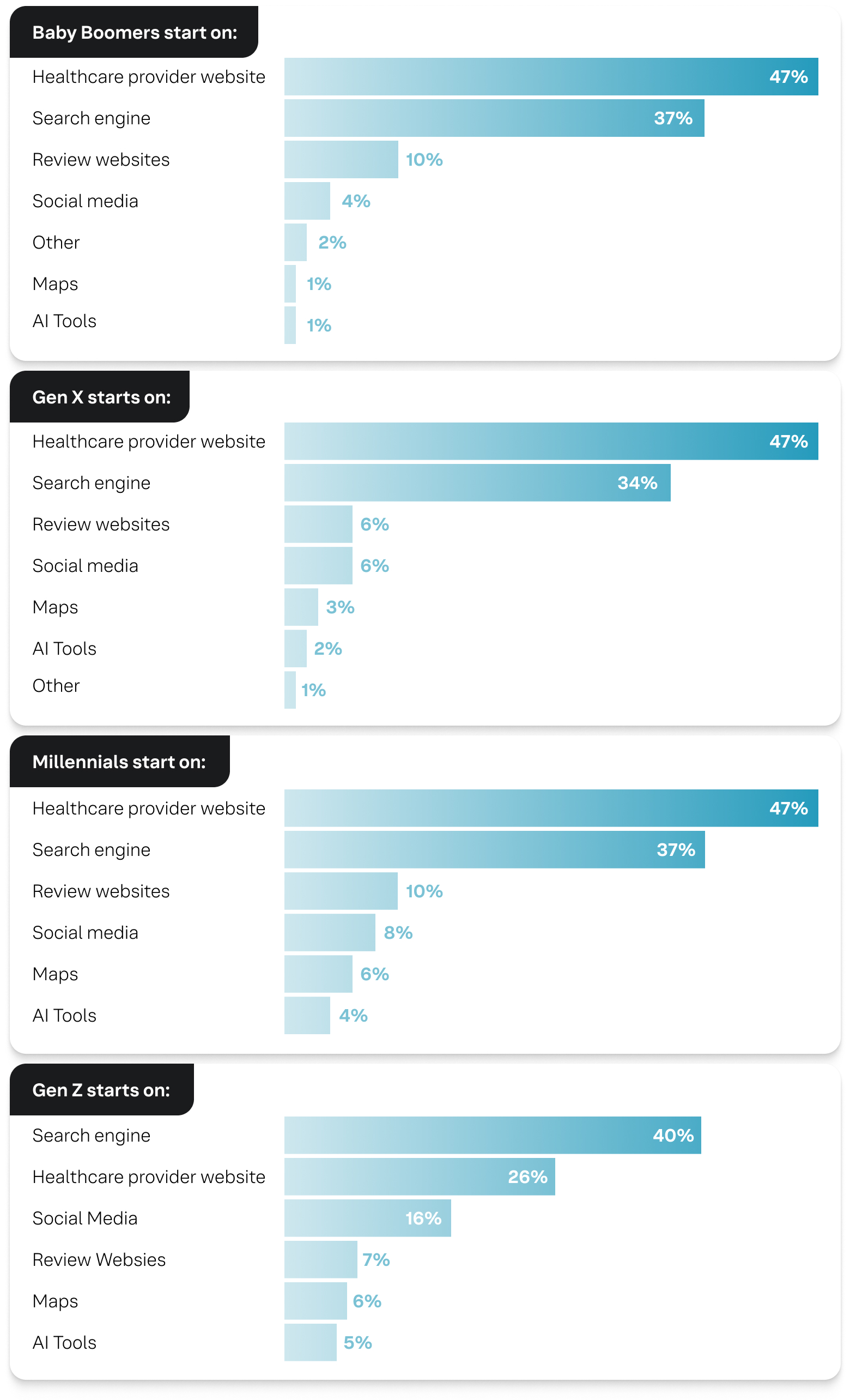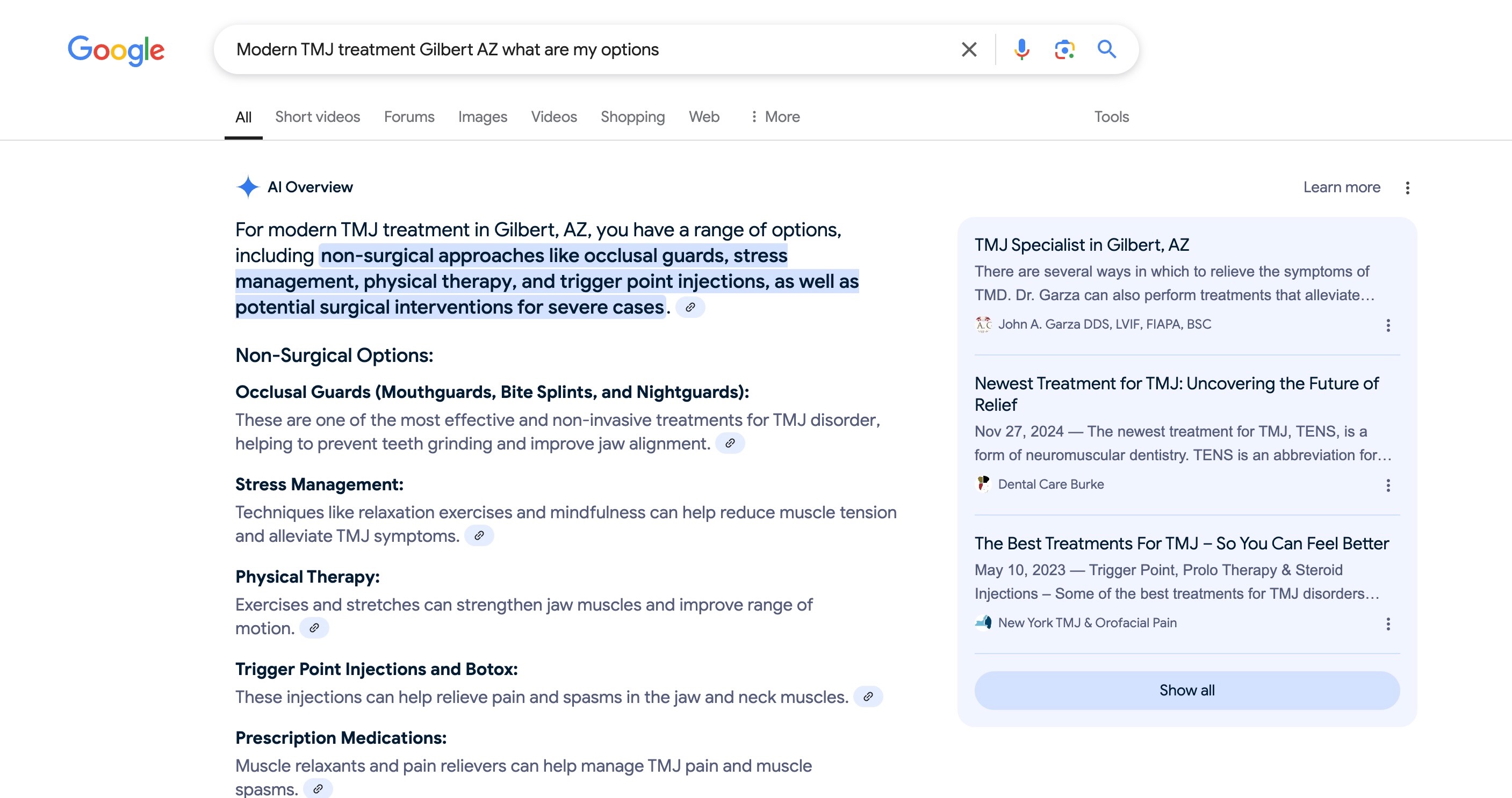Patients today expect personalized, seamless experiences at every touchpoint. But many healthcare organizations still rely on outdated, one-size-fits-all digital strategies — leading to frustrated patients, lost trust, and missed opportunities to book new appointments.
Industry Insights
Creating a Better Patient Experience Starts with Personalization
Creating a positive healthcare experience starts long before a new patient steps into your office. Here’s how it’s done.

Why personalization in healthcare matters more than ever
Patients are making deeply personal, often stressful decisions about their health. Many also navigate healthcare for their loved ones – be it a spouse, children, aging parents, or all of the above.
A one-size-fits-all approach to patient engagement and experience is no longer enough. Patients expect to find highly relevant answers to healthcare questions online.
Personalization is a marketing strategy – it's also a trust-building tool. It strengthens patient confidence, boosts engagement, and improves satisfaction and loyalty.
So, how do you create a patient experience that feels personalized and responsive to individual needs? Keep reading.
Step one: know where your patients are – and meet them there.
Where patients start their search for a healthcare provider varies widely by generation.
Let's look at a breakdown from our Digital Presence Healthcare Survey:

As you can see, less than half (and in some cases, closer to a third) of each generation turns to search engines first. Baby Boomers rely mostly on search engines and provider websites, while Millennials and Gen Z are all over the place – turning to social media, maps, and AI for answers.
The question is: Are you visible where your patients search? If you're unsure, there's work to do.
Step two: make it easy for patients to learn about care options
Many patient journeys begin with Dr. Google, where patients search for immediate, reliable answers to highly specific, condition-based questions.
Google's AI Overviews (AIO) prioritize trusted healthcare facilities like Mayo Clinic and Johns Hopkins when providing answers to broad medical questions. But localized searches give smaller providers an opportunity to shine — if they have the right structured content in place.
When a patient searches for treatment options nearby, like "What are my options for modern TMJ treatment in Gilbert, AZ?", AIO highlights local providers with the most relevant, well-structured content and detailed FAQ pages — making it critical for healthcare organizations to optimize their digital presence.

How to appear in local searches:
Publish detailed, well-structured content that answers common patient questions and concerns.
Use schema markup, proper formatting, and metadata to help AI surface the right content at the right time.
Optimize content with clear, factual information that helps guide patient decision-making. When patients find direct, trustworthy answers from your organization, they're more likely to take the next step — scheduling an appointment.
Step three: publish localized, provider-specific information
Patients don't just want broad medical advice — they want to find a trusted provider in the right location with the right expertise. While AIO can provide general information, patients still need deeper, personalized details about available care options.
What patients look for:
Reviews – both positive and negative – from current and former patients
Location pages featuring clear, accurate, detailed contact information and a list of services
Up-to-date listings that appear everywhere customers search – from ZocDocs to Google Maps to Yelp and more
A comprehensive provider search. Ideally, each doctor has their own bio page, which highlights their expertise, specialties, and conditions treated
When patients are ready to take action, booking should be effortless. Optimize your site with clear calls to action (e.g. call to schedule, click to book, or send a message).
Using a platform like Yext – which integrates and connects with appointment scheduling apps – gives you the best chance to convert a patient every time.
Step four: prioritize personalized review responses
A strong review strategy goes beyond reputation management — it's a critical component of patient trust and retention. In fact, 74% of patients and patient advocates consider reviews to be the top factor when choosing a healthcare provider.
Personalized review responses:
Build trust. Acknowledging patient feedback — both positive and negative — reinforces a commitment to quality care.
Strengthen relationships. Engaging with patients demonstrates that you listen, care, and take action.
Highlight strengths. Responding to positive reviews helps showcase what sets a provider apart.
When a patient sees something like this: "Dr. Smith was incredibly compassionate and took the time to explain my diagnosis in detail."
With a response like this: "Thank you for your kind words! Dr. Smith is dedicated to providing personalized care, and we're so glad you felt supported during your visit."
Engagement like this reassures potential patients that your organization values their experience. In fact, Yext customers who respond to at least 75% of customer reviews have an average +0.53 higher star rating. This small but powerful step will boost your online reputation and earn patient trust.
Healthcare is deeply personal; your marketing should be, too
Personalization in healthcare is no longer a nice to have; it's a necessity.
By meeting patients where they are and delivering tailored search results, provider data, and localized content, healthcare organizations can build trust and improve the patient experience. Patients who feel seen, heard, and understood are more likely to choose — and stay with — your organization.
Ready to take action? Learn more about the AI revolution, get insight into how AI is impacting healthcare marketing, and check out steps you can take to win in the new era of search.
